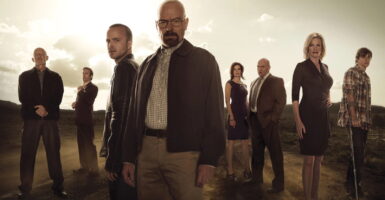DARPA’s 1.8 Billion Pixel Camera Is The Most Powerful In The World
This article is more than 2 years old
The first camera I ever owned/destroyed came with some detective board game I got as a birthday present when I was a kid. It had its own little spool of film, and took AA batteries and everything. The contents of that film have been lost to history and some form of water rot. And here we are, however many years later, and the best camera I’ve ever owned is inside of my phone. But the unveiling of the ARGUS-IS has me thinking I should be asking DARPA for an early birthday present this year.
The ARGUS, which comes to us courtesy of the U.S. Army, as well as DARPA, is probably the highest-resolution camera in the world, and definitely the highest-resolution surveillance platform in the world, and with its ridiculous 1.8 gigapixel display, why wouldn’t it be both of those? It would sit at an altitude of 20,000 feet, just less than four miles, and could observe an area of 25 square miles at one time. Forty-eight of them could watch all of Rhode Island, at all times. And they’d probably yawn a lot.
Here’s the horrifyingly awesome kicker: the detailed images that 1.8 billion pixels allows for can be zoomed in enough to detect the color and type of people’s clothing. If a turtle is walking across the ground, you’ll be able to see if there’s a rabbit up ahead near the finish line. You can’t quite pick out eye color, but you can actually see if someone got their eye poked out.
The mega-detail actually comes from 368 smartphone camera sensors, all at 5 megapixels, all focused on the ground, using four telescopic lenses. It reportedly produces one million terabytes of data a day, 6,000 terabytes of it video data, all stored by the Army for some unforeseen future when jaywalkers are Public Enemy Number 1.
We don’t even know what it’ll actually be used for. It was originally supposed to be deployed above Afghanistan, but since that peaceful place stopped needing America’s guiding light to find their way, there was no need for it anymore. It will probably be strapped to a drone to live out its days, making it so much easier to try and catch Justin Bieber toking up.












